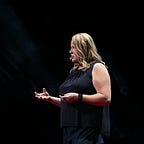Beyond Coding: Preparing Students For Their Future
Google was founded with the hiring idea that only people trained in technology can understand technology. Computer science graduates from elite universities were prioritized over other hires. In 2013, Google set out to test that hypothesis, that technology graduates really were the best hires. Google found out they were wrong.
After all the data and numbers were crunched from 1998 to 2013 Google found that among the skills for employees, “hard” STEM skills came in eighth. Ahead of STEM were “soft skills”: communication, emotional intelligence, empathy, critical thinking and problem solving, and being able to make connections across diverse ideas and viewpoints.
Dani Sloan, the President of the Utah Coalition for Educational Technology said, “we often think that preparing our students for their future looks like teaching them to code, but more often it looks like preparing them to be problem solvers and collaborators.”
Some ways to encourage soft skills include:
1. Let students fail
Albert Einstein famously said, “Anyone who has never made a mistake has never tried anything new.” Failing teaches such soft skills as empathy, resiliency and problem-solving.
Sloan said that allowing students to “fail in a safe place and try again” is powerful. This can be done by allowing debates, experience and student-directed projects and grading on participation, not perfection.
2. Debate
The students from the Marjory Stoneman Douglas High have been so polished with the media that some talking heads accused them of being “crisis actors.” But they were no actors, they were just skilled in debate. Broward County has one of the largest debate programs in the country.
Beth Pollock, an Elementary Literacy Specialist from Jordan District said, “young people feel a need to be the best at something…I believe that this stems from the world they live in where pictures are filtered, news is fake, and every amazing feat is captured on video and shared on social media. Because of this, it is often difficult for students to concede an argument, see another point of view, or value the ideas and opinions of others.”
This doesn’t just have to be encouraged in a formal debate class, but even can be integrated into STEM subjects. For example, students can debate two hypotheses on a scientific theory or be encouraged to discuss current events in relation to their computer science class. Pollock suggests that “teachers can help students overcome these feelings by requiring them to actively seek out and incorporate the ideas of others in their work.”
3. Information and Media Literacy
“Too often young people tend to believe everything they see online, Pollock said. We need to do a better job of creating critical consumers of media and information.”
Statistics back up that assertion. A study out of Stanford Graduate School of Education found that students were very unprepared to navigate the deluge of information in today’s world. One researcher from the report said, “a digitally literate student has the knowledge and skill to wade through mixed results to find reliable and accurate information.” Unfortunately, there is a lack of digitally literate students.
4. Empower Teachers
Sloan said, “the teachers we have in Utah are incredible, but they don’t see what they do as innovative or genius, but it is exactly that!” How teachers feel they are treated and listened to affects the quality of teaching.
Teaching is one of the most stressful careers in the United States. A 2017 report by Penn State and Robert Wood Johnson Foundation stated that among professional careers, teachers rate lowest in feeling that their opinions count at work. Just like students, teachers should have a safe place to experiment and fail and have their voices heard.
“Students are coming into classrooms with more technology skills than ever before,” Pollock said. “Often a fourth or fifth grader can solve the problems that occur on classroom computers and devices better than the teacher. Unfortunately, students are also coming into classrooms lacking soft skills that are necessary for success.”
It can be difficult to teach soft skills. They’re not easily quantified and harder to track. While educators have a unique ability to teach these type of soft skills, it is not necessarily their responsibility. It takes a community and a collective approach to make an impact.
